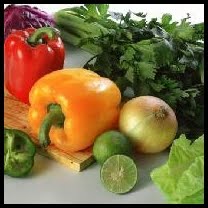Once researchers started uncovering the synergy of food-based antioxidants for skin health, the focus turned to other nonvitamin antioxidants that could serve as UV protectors. Those amazing phytochemicals we consume in healthy foods and beverages have skin-protecting and age-proofing nuttients. A diet rich in a variety of colorful fruits and vegetables can put the brakes on the skin-aging process. Here’s what you should eat:
Foods With Lycopene
A member of the vitamin A family of antioxidants called carotenoids, lycopene is one antioxidant that has UV-protecting properties. It has been shown to prevent UV-induced sunburn. Lycopene is abundant in tomato products and also found in apricot, pink grapefruit, guava, watermelon, and if you can find them, red carrots.
The most interesting study compared a lycopene juice, a tomato paste, a supplement tomato extract with lycopene, and a synthetic lycopene supple¬ment. After twelve weeks of consumption, all groups except the synthetic lycopene consumers had significant reductions in sunburn after experimental UV exposure. The results showed that the adults consuming 5 to 10 milligrams of lycopene had an almost 50 percent decrease in the sunburn teaction.
This is yet another study underscoring the notion that whole foods or food-based supplements are much more likely to make a difference than synthetic supplements. When you decide to incorporate lycopene in your diet, consider tomatoes or a tomato-extract supplement and steer clear of synthetic lycopene.
 Green Tea
Green Tea
This is yet another antioxidant-rich item for healthy, glowing skin that was inspired by cardiovascular research. Green tea contains important antioxidants and anti-inflammatory chemicals. More than two dozen studies have shown that green tea’s antioxidants—and its component epigallocatechin-3-gallate (EGCG), in particular—can help prevent UV-induced skin cancer and DNA damage. While more human data is needed, the largest review to date, published in Photodermatobgy, Photoimmunobgy & Photomedicine (2007) concluded that “the available evidence indicates that green tea has many biological effects that ameliorate the damaging effects of both UVA and UVB radiation.”
In addition to providing UV protection, a topical and oral green-tea supplement combination, administered for eight weeks, has been shown to improve the dermal elastic tissue in healthy women with moderately aged skin. Other teas from the same plant (Camellia sinensis), including white tea, oolong tea, and even black tea, are being investigated for protection against UV damage and overall promotion of healthy skin. In addition, South African rooibos tea has been in the spotlight recently for its ability to lower inflammation and protect against skin cancer.
Ginger
Since tutmeric and ginger are in the same plant family, it shouldn’t be too surprising that ginger would have similar anti-inflammatory and antioxidant properties. Ginger shares a similar story with a very long history of recorded medicinal use throughout Asia. Orally consumed ginger exerts significant anti-inflammatory activity, strong enough to provide relief in osteoatthtitis patients. The anti-inflammatory chemicals in ginger also provide protection against UV exposure for the skin.
One unique characteristic of ginger is that, according to research published in the journal Pharmacology and Therapeutics (2006), it prevents the breakdown of elastin and the otherwise inevitable formation of wrinkles in experimental animals exposed to UV radiation. Both ginger and turmeric can be consumed in curries or incorporated into meals ranging from steamed vegetables to fish dishes. Since both turmeric and ginger can put the brakes on collagen-busting, skin age-inducing PGE2, they would be a top choice for the maintenance of healthy, youthful skin.
Honorable Mentions
Plenty of other foods can help reduce inflammation and provide a significant antioxidant boost. Whole grains, for example, are best known for keeping blood sugar balanced, enhancing satiety, and improving bowel function. Whole grains also carry significant antioxidants in the fibrous portion of the cereal. Oat bran and granola cereals have impressive antioxidant properties.
Nuts, especially walnuts (which are very rich in omega-3), pecans, and hazelnuts have very high antioxidant properties. Walnuts provide eight times more antioxidant protection per gram than peanuts and even double that of the much-heralded blueberry.
Then we have the culinary spices. All of these minor dietary items could easily be overlooked in fast-food-driven dietary choices. Turns out that cinnamon provides thirty times the antioxidant protection per gram of blueberries—and cloves provide even more protection! Keep culinary herbs and spices in full view to remind you of their necessity. Your skin will thank you for it.
Dietary Supplements
Most of the dietary item have both antioxidant and anti-inflammatory activity. This provides a protective double-edge because oxidative stress and free radicals cause inflammation in the skin, and, in turn, inflammatory chemicals promote further oxidative stress and free-radical generation. Obviously, dietary agents that can halt this cycle of skin damage would be good candidates for inclusion in skin-healthy dietary supplements.
